#inside tips
Text
percy: people who don’t put q-tips in their ears are such big babies. like, grow the hell up
annabeth: but it’s terrible for you
percy: okay? so is coffee. so is alcohol. so is working a 9 to 5. adults don’t do things that are good for them. that’s what makes you an adult
annabeth: you take vitamins every day, which is being healthy. are you saying that’s childish?
percy: hey now, i only take those cause they’re blue and look like cute little sharks
annabeth:
annabeth: i’m sorry you’re right. that’s very adult of you, seaweed brain
#let percy be percy#he’s so cute#annabeth loves him so much#she’s melting inside#ok but in all seriousness where do we stand on q-tips in the ear?#percy jackson#annabeth chase#percabeth#pjo incorrect quotes#incorrect quote#pjo#heroes of olympus#percy jackson and the olympians#rick riordan#riordanverse
3K notes
·
View notes
Text

I've been seeing people draw anxiety with a tail and I just gotta say that I feel like it would look like this
#like all of it is furry it's just the tip of it is like the same as her head hair#inside out#inside out fandom#inside out 2#inside out anxiety#doodle#my art
754 notes
·
View notes
Text
I wanna know which of y’all’s men is “just the tip, baby”-ing his way to your cervix and breeding you
#this is brought to you by Sanji#who swears he’s just going to put the tip in since he hasn’t stretched you out enough for his slightly thick but long pretty dick#but five seconds after feeling the way you’re squeezing around his tip he is pushing the rest of the way in until his hips are flush to you#he tells you he can’t help it because you feel so damn good#I feel like this thought also applies to Eustass Kid but he never planned to just put the tip in#only told you that so you’d relax and let him inside you#in other fandoms I feel like this applies to Taiju and Draken and maybe Mitsuya#maybe shuji too but where he never intended for it to be only the tip but wanted to get your under him
487 notes
·
View notes
Text
puppy boys with fat cocks
#u agree !#they’re just so eager to please and their tip leaks at the slightest affection and god forbid you let go of the leash#because they’re all over you. shoving their thick cock inside moaning and whining a mess.#saying ‘sorry sorry sorry sorry ahhhhh feels so good god it’s so fucking good ah sorry sorry sorruyyuuu’#yuuji <3#gorou <3#beel <3#<- you are soooo correct lia
1K notes
·
View notes
Text
Stop searching. Your "key" is inside you not in other people.
#you have it#everything youll ever need exists inside of you already#shiftblr#shifting antis dni#loa tumblr#reality shifting#loa blog#shifting community#shifting#loassumption#shifting realities#loablr#reality shift#shift#shifters#anti shifters dni#loa advice#loa manifesting#loa tips#loa success#loa#loassblog#loass states#loass post#loa affirmations#loa assumptions
211 notes
·
View notes
Note
How's keeping that mental breakdown in check going for Falspar?

could be better
#post's rambles#mir falspar#dark meta knight#galaxy soldier army#kirby right back at ya#post's art gallery#mirror madness#pro tip (part two): if Mir Falspar is trying to avoid YOU#then perhaps the danger is coming from inside the house
203 notes
·
View notes
Text
don't have pics because it's nearly 4 am but i just finished fully handsewing a chocolate brown linen button up long sleeve shirt that i'm certain is going to be one of my go-to shirts from now on
#stitched everything with a needle and waxed thread without a thimble. my finger tips are calloused in the right places#button holes also stitched by hand... all insides flat felled and finished... did a hem facing.. la la la
122 notes
·
View notes
Text
Understanding study material 📚 Effective strategies 🤔
Here are some research-backed tips to help you navigate difficulties in understanding study material effectively 💪🏼
1️⃣ Break down complex concepts
Research suggests that breaking down complex concepts into smaller, more digestible parts can aid in understanding. Divide the material into manageable sections and focus on understanding each component before moving on to the next.
2️⃣ Engage in active learning
Active learning techniques, such as summarizing, teaching others, and practicing with flashcards, can improve understanding and retention. Engage actively with the material by explaining it to a study partner or testing yourself with practice questions.
3️⃣ Seek clarification
Don't hesitate to seek clarification from your instructors, peers, or online resources when you encounter difficulties. Research indicates that asking questions and seeking feedback can enhance understanding and fill in knowledge gaps.
4️⃣ Utilize visual aids
Visual aids, such as diagrams, charts, and graphs, can help simplify complex information and improve comprehension. Create visual representations of the material or use existing visual resources to enhance your understanding of challenging concepts.
5️⃣ Connect new material to prior knowledge
Research in cognitive psychology emphasizes the importance of connecting new information to existing knowledge for better understanding. Relate new concepts to familiar ideas or experiences to establish meaningful connections and improve retention.
6️⃣ Practice retrieval techniques
Research studies suggest that practicing retrieval techniques, such as self-testing and quizzing, can strengthen memory and understanding. Test yourself regularly on the material to reinforce learning and identify areas that require further review.
7️⃣ Collaborate with peers
Collaborative learning has been shown to enhance understanding and retention of study material. Engage in group study sessions with peers to discuss challenging concepts, share insights, and benefit from diverse perspectives.
8️⃣ Take breaks and manage stress
Take regular breaks during study sessions, practice relaxation techniques, and prioritize self-care to manage stress levels and optimize your cognitive performance. Read posts about mental and physical health to find more useful information.
#medicine inside#studyblr#study with me#study hard#study time#study desk#desk setup#study notes#studying#study inspiration#study tips#tips to study#medicineinside tips#tips for students#study habits#study method#studyinspo
196 notes
·
View notes
Text
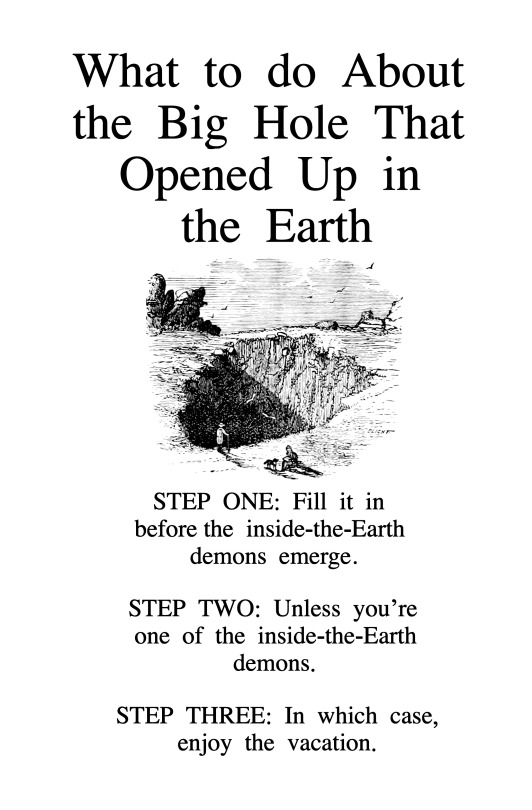
#What to do About the Big Hole That Opened Up in the Earth#tips#tricks#life hacks#helpful hints#advice#inside-the-Earth demons#unreality
158 notes
·
View notes
Text
Rhiannon: *calling Ianto*
Ianto: Hi Rhiannon, are the kids ok?
Rhiannon: Yeah they're fine, I was just wondering-
*sounds of machinery in the background*
Rhiannon: ...what's going on? Is this a bad time?
Ianto: Oh that? No yeah its fine I'm just tossing my boyfriend off a cliff.
Rhiannon: You're...what? What's going on? Is everything alright?
Ianto: Oh yeah. It's just that he's currently fully encased in cement so I've gotta break him out.
Rhiannon: ...
Rhiannon: But wouldn't that kill him Ianto?? If this is a bad time I can-
Ianto: *laughs* Oh don't worry about him he'll be fine. So what's up?
#yearly reminder that I am in fact alive#and tipping my toes back into the Torchwood fandom#seriously imagine Ianto explaining that situation to a outsider with absolutely no context#like#“oh don't mind me I'm just tossing a big ol' hunk of cement containing my hunk of a boyfriend/boss off a cliff”#“after he was exploded from the inside by a bomb that was implanted into his body”#“just a normal Tuesday”#bloody torchwood#torchwood#ianto jones#rhiannon davis#janto#incorrect quotes#incorrect torchwood quotes#humor with a dash of janto
85 notes
·
View notes
Note
Hi! First off, I want to say that I love how you analyze media and having really been enjoying reading all your posts :)
I just wanted to ask—do you have tips for people who what to learn to think more critically about media and just storytelling in general? Like, are there questions that you usually ask yourself when looking at a character's journey or the messaging behind the movie?
Just trying to learn how to better analyze the media I consume, as well as improve on pinpointing the specific reasons why I like the movies that I like, instead of just saying "Well, I liked it. It was great" and leaving it at that 🙈.

New favorite question!
I love that you want to know why you like something. I love it. I think so many people are ready to give a defense for why they dislike something, and the blood-sport of “picking it apart,” but then they don’t really know how to reverse the process and be like, “here’s why I liked this other thing,” or they can’t speak accurately and clearly about why they like something, which is a huge shame, and sort of raises other questions about critical thinking but you’re not doing that! So you’re already awesome!
I am not an expert. I could be 100% wrong about everything I do, and all the questions I ask. I only went to a normal amount of education for this. It does not mean I have all the insight and the good advice.
BUT you asked, and I love talking about it, so it’s going to be long, and here’s what I do:
Step 1. I Just Watch the Movie.
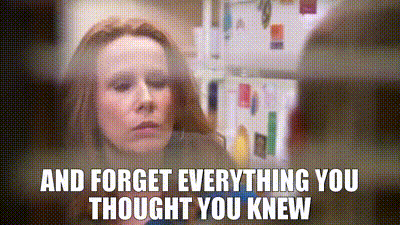
That’s it. Just take it in. No expectations. Do not try to figure out what’s wrong with it or what’s right with it. Don’t even assume there’s such a thing as “right” or “wrong” the first time you watch it.
It is THE hardest thing to do, once you gain some “knowledge” of storytelling. But truthfully, if you go into a story with your eyes and ears open for flaws, or a checklist of “Right Things to Do,” then you’ve already lost any objectivity. You’ll be so busy going “good thing, bad thing,” that the movie will never be able to establish an “emotional train of thought,” with you. Because you’re already taking it piece by piece, like eating a burger one ingredient at a time, instead of taking a full bite. It’s meant to be one-successive-thought/feeling-on-top-of-another, but you’re picking it apart before it’s over.
Plus, you’re not letting the story do what it was meant to do—get under your mental guard. And that’s the whole point of stories. So in a way, if your Critical Analysis Cap is already conciously on, even the best movie in the world won’t come off as the best movie in the world. C.S. Lewis talks about this in one of his essays. I’ll try to simplify it:
You can’t decide if you like something or dislike something until after you’ve eaten it. You certainly can’t really experience “what ingredients it’s made of” before you’ve eaten it. You can make some observations about a food without ever putting it in your mouth and experiencing it—I can look at a brownie and go, “there’s chocolate in there.” I can cut into it and go, “oh, but it’s tough.” But I haven’t even begun to scratch the surface of experiencing that brownie until I just shut up and put it in my mouth.
That is the hardest part and the part I suck at the very most. My suckiness at this part is why my friends hate watching movies with me. But on some level, you have to suspend your worldview, your opinions, and try to just listen.
It’s also why (this is just an aside) I struggle when people recommend a movie to me. Because they usually go, “what do you think of this movie?” And then I say, “I haven’t seen it.” And then they go, “oh you should watch it!” And I know for a fact that they’re going to ask me how it was, and my answer needs to be prepared—so then I’m already handicapped before I even try it. But it can’t be helped. And that’s just food for thought.
Step 2: “What Are They Trying to Tell Me?”
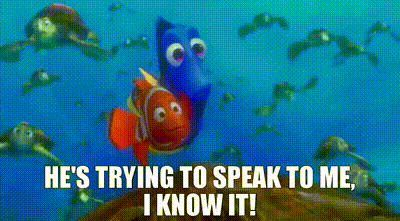
The only thing you need to think, when you go into analyzing a movie, before anything else, is, “They are trying to tell me something.”
That’s it. It’s just active listening, but in a movie. I think that’s like 90% of it. And so many people don’t know how to do that—in life, in conversation—let alone when they watch something. It’s the movie-watching equivalent of “stop thinking about what you’re going to say or how you’re going to respond to me, and just listen to what I’m saying.”
Remember, the whole storytelling team behind a movie or the writer of a novel sat down in front of a blank piece of paper. There was nothing there. They made several hundred thousand tiny and huge decisions to put something in front of you. Almost nothing you see in the story is there on accident. Because none of it would be there if they didn’t decide to transplant what they were thinking and feeling into you.
That’s all a movie is. That’s all a story is. It’s communication. It’s an essay. It’s a sermon. It’s a song. You can figure out what it means—but only if you start out by accepting, on good faith, that it means something.
I’m not saying every story of movie will have a well-thought-out meaning. I’m saying, you’re going into it as if it does. In good faith. And then the storytellers will either reward that good faith because they had something to say—or they’ll let you down. But you go in assuming they won’t let you down, that this is an agreed-upon conversation you two are having.
That takes a level of humility I don’t always have. Because if I know Christopher Nolan is directing a movie, at this point, it’s hard for me not to go into that movie with the story-version of this mindset: “well, I know he’ll have a lot of ‘big words’ to use, but nothing to actually say.” It’s hard to do.
But you have to do it, or else the risk of you projecting what you believe the movie is about onto it, or missing the meaning entirely, is astronomically high. You’ll watch a Disney Princess movie that’s total trash (I can’t stop coming for Wish) and you’ll see everything you’ve always wanted to see in it—because you’re projecting what you hope they’re saying onto the movie (when actually they were saying something very silly.) Or you’ll be like me watching The Dark Knight for the first time and trying desperately to wrestle my brain into “believe he’s trying to say something to you and not just snag your emotions on meaningless twists”-mode the whole time.
And the best way to figure out what they were trying to tell you is to start with where they succeeded in making you feel something. Wherever they succeeded, that’s where you’ll start looking for clues.
Step 3. What Did You Feel?

Sometimes you have to skip this step because you couldn’t get Step 1 right. You couldn’t just watch the movie, you were “out of the movie,” the whole time you were watching it. Sometimes that’s not your fault—sometimes a movie is so bad or so disingenuous that you can’t do Step 1, and you have to settle not for “What Did You Feel?” (Because you felt nothing) but “What Did They Want Me To Feel?”
…But if you were able to just watch it and it made you feel something, then this step is about analyzing that.
I recommend starting with a movie you watched when you were a kid—because kids almost never fail at Step 1. Their brains are sponges. Your brain was a willing sponge, you believed that the story was telling you something and you took it in without any conscious thought.
So like, if you felt like crying during the scene in Inside Out where Bing Bong fades away, or you did cry, ask yourself “why?”
The first answer to that question will be “because I liked Bing Bong and now he’s gone, and that’s sad.”

The second one will be: “because I miss my imaginary friend/because I miss my childhood/because I wish I didn’t have to lose memories of good things” etc. And all of that’s true.
But dig deeper. Because that’s exactly how the storyteller wanted you to feel. Reverse-engineer it. Figure out how they accomplished that goal.
Because we all had play-pretend characters when we were kids. We all had childhood friends who aren’t with us anymore. I guarantee you none of them looked like cotton-candy chimeras with hobo jackets. So why did you respond to Bing-Bong’s death as if you were losing something personal? How did they get you to believe that was happening, enough to make you sad, about a character you met an hour ago?
Because you got to know him well over the past hour. You got to know things about him that were easy to believe, things that were in common with your life experiences. You know what he wants, what he doesn’t like. You know where he was hoping to go, and what he was afraid of.
That ties into the next point, but you can do this with things that don’t have anything to do with the character—the other things that make up a movie.
What music was playing during the part where you Felt Something? Was that same melody or motif in another part of the movie—and if it was, what was happening in that part? Are they connected somehow?
What color predominates the screen during that part?
What is the lighting like? Does anything make the lighting different than what we’ve seen so far? Is the lighting creating interesting shapes—how would you describe those shapes?
Where are we? Is it a significant location? What makes the location significant?
Are we losing something? Why does it feel like a loss? Are we gaining something? Why does it feel like a gain? What was missing before that we’re glad is here now?
Those are just a few questions. Because remember, by answering them as honestly and simply as you can, you’re figuring out that the storytellers chose those things, and you’re figuring out why that was the right choice.
Do some compare-contrast: when Bing Bong fades away, what color is he turning before disappearing?

Deep blue, almost purple, right? If you can’t figure out why that would be a good choice, do some compare-contrast. What if the color he was vaguely dissolving into was green? That would look kind of sickly, or it would evoke feelings of “poison gas.” Weird for a moment that’s supposed to be sad. What if the color was yellow? Joy is yellow, in the movie. So pretty directly, that would be the wrong color because it would be kind of pretty, and it would make the audience feel a little “ooo” like they do when the Beast transforms in yellow light. But blue? Who’s blue in this movie? Sadness. Obviously. Sadness is blue—it’s very human to respond that way.
You can do that same “what-if, compare/contrast” with the answer to every question on that bullet point list.
“When Genie is set free and I Felt Something, the location it’s in is on the throne room balcony. Well, why? Why’d the storytellers pick that? Because that’s where they were after the final battle, yeah, but that final battle could’ve been anywhere. Why didn’t the final battle with Jafar finish by having everybody in the throne room? Well, if it had been in the throne room, there would have been a lot of destruction from the final battle laying around. Having ruins behind Genie while he looks all sparkly and triumphant would’ve been a little odd. Plus, there would’ve been a roof. Would he have gone “I’m freee—hee!!” and flown out a window? That might’ve felt silly. But out on the balcony, he’s looking sparkly and triumphant against an open sky. Ohhh, an open sky makes you think of endless opportunity. That’s so smart. Even my subconscious was convinced, by the sky behind him, that something momentous and liberating was happening in this scene. And not just for Genie, but Aladdin is finally being “freed,” too, because they know who he is and love him anyway, and Jasmine is being ‘freed,’ too, because the law—“ Okay that’s enough, you get the idea.
Let’s go into the really fun part.
Step 4. I Look At The Characters
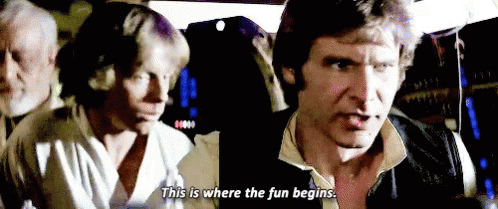
A good storyteller uses something that the audience can relate and empathize with for their main focus. And that’s usually a character (doesn’t have to be. You can describe a tree with personification in a poem, and a human will empathize with that tree’s “life,” or situation, and boom—suddenly you have a story.)

A super talented writer I know named @doverstar once wrote an entire story from the perspective of I think a paperclip? And I still remember it to this day. (Specifically I remember a crazy straw wrapper in the story, but you get my point.)
SO! Characters are the easiest and best way for a storyteller to get the person they’re trying to communicate with to engage. Which means, looking at characters is the easiest avenue to understand a story by. Usually, the storyteller jammed the whole message of the story into their characters in neat, interesting little packages. You just have to unpack them.
Here’s how I do it, roughly:
A. Figure Out What the Character Wants
In my post about The Lion King, I said Simba wants to be free to do whatever he wants all the time. And that’s true. But how did I figure that out? I’ll show you. It’s plain, because the storytellers wanted you to know.
Look At Dialogue - What a character says almost always gives you hints to what they want—even if they never say what they want out loud. Kids are most likely to say it, point-blank. So cub-Simba says, “But I thought a King could do whatever he wants.” But adults usually don’t say exactly what they want, because by that time, they’re either confused about what they want or they’re insecure about what people will think of what they want—whatever. The point is, pay attention to what a character says. Simba also sings, later, “free to do it all my way!” You can also find a lot out by what a character doesn’t say. Aladdin could’ve said, “yeah, well, at least I’m not a pompous jerk!” when Prince Achmed calls him “worthless.” That would’ve been more of his gutsiness, and he would’ve been right, like a hero should be when calling out a bully. But it wouldn’t have told you anything about what he thinks about what Achmed just said. Instead, he goes, “I’m not worthless!” …People who really believe obvious things don’t say those obvious things. Because they’re obvious. So when Aladdin says, to a closed door and an empty street, “I’m NOT worthless,” you realize that he’s just trying to convince himself. What he means is, “I don’t want to be worthless, and I don’t want to be seen that way.” Because on some level, he is afraid that he is worthless. See how you can tease that out based on what Aladdin says? Then it makes sense that, from that moment on, Aladdin does everything to prove he’s not worthless, or to make people believe he’s not—he goes to great lengths to preserve that image. That’s his motive. Just like Simba disobeys his father and Zazu because he wants to prove he’s a powerful Prince who can do whatever he wants. That’s his motive at the beginning of the movie. You can also learn a lot about what a different character says about another character. And whether or not they’re portrayed as right or wrong. When Prince Achmed says Aladdin is “worthless,” you don’t believe him. He’s drawn in gross curvy lines and he whips children and kicks poor people. You’re not inclined to believe he tells the truth, on top of all that. So the storytellers don’t want you to think Aladdin is worthless—they want you to believe that Aladdin thinks he’s worthless, on some level.
Look at Actions - Actions do speak louder than words. When a character is presented with a decision to make, look at what road they take.

Look at what that says about them. For example, when Andy Dufresne chooses to play music for all the people at Shawshank, even though it’s definitely going to get him in trouble, or when he dares to approach and talk to the abusive prison guard just for a few beers, you learn something about him. It might be confusing, and it might take cross-referencing that action with the fact that he’s digging himself a way out while everyone else is accepting their sentence. But you’ll see that he could have just done what everybody else did. Got through his sentence with the bare-minimum of work. Kept himself busy with any old thing. But that’s not what the storyteller has him do. The storyteller had him continue to bring new, life-lived things into the prison. He creates a space for people to learn and better themselves, he wheedles beers in just for the enjoyment of them, he’s beaten for the sake of music being played. The idea is that he’s going to keep pushing and living, reaching for more, instead of settling, like a man who’s already dead. So then by the time he digs his way out of Shawshank, you believe it. You’re like, “yeah, Andy would do that. I’ve seen him go to great lengths to live this whole time.” Through his actions, and the actions he doesn’t take even when he could, you figure out his motive.
Watch for the Change - Not every character changes. But when a character starts saying something that’s opposite to the kinds of things they said at the beginning, take note. When the character starts doing something they wouldn’t or couldn’t do at the beginning, take note. Miles Morales tries to jump off a building as his first test of being Spider-Man, and he can’t, he goes to a shorter building. Later in the movie, he jumps upside-down off of one. The change in action demonstrates a change in motive—he used to be focused on not-failing. Now he’s focused on taking action.
I’m sorry, I know this is already a long post, but wanna see it all come together?
(Dialogue) On Miles’ first day in class a girl points out that his shoes are untied, and Miles says, “I know. It’s a choice.” He leaves his shoes untied on purpose. (Action.) He also tries to fail in school on purpose. (Action and Dialogue: His teacher spells it out with her dialogue “You’re trying to quit. And I’m not going to let you.”) Then later when Mils tries to run and jump off a short building as Spider-Man, his shoes are still untied. Why? He does things sloppily on purpose. He leaves his shoes untied the same way he tries to fail tests he knows he can pass—because it’s easy. Because you can’t fail at something risky if you don’t try. So he trips and falls off the building. (Action.) That’s Miles’ motive. He’s got “Great Potential,” but he could succeed, but he chooses not to because he’s afraid of failure. Then later, when he leaps headfirst down a skyscraper, did you notice his shoes? They’re tied. (The Change.)
All from a pair of shoes.

Someone had to draw this kid’s shoes, before anyone knew what he would be wearing, and decide why it mattered. Someone had to pick what dismissive line a kid would say to him on his first day of school—and they had to pick exactly what words he would use to respond.
They’re trying to tell you something. All you have to do is believe that, and then you’ll start to not only hear what they’re saying, but appreciate how they choose to say it.
B. Figure out Who a Character Is
This one you can find clues for in the same three things: Dialogue, Actions, The Change. (If there is a change. There isn’t always.)
A character like Stitch is easy to analyze. Other characters straight up say (Dialogue) “You were built to destroy, you have no place among us, you wreck everything you touch, there is nothing inside you that is good.” Then he makes abominable choices (Action) pushes little girls down, rips up toys, chews on the heads of other aliens, actively tries to murder alien cops. But he also looks sad after a night of destroying things (Actions) and asks Lilo to explain to him a book about an ugly duckling (Dialogue? He sort of grunts.) So you’re starting to notice solid character traits: Stitch is evil, Stitch likes being evil, but Stitch feels empty being the way he is. Then when the Change comes, it’s meaningful, and it gives you a hint as to what the storytellers were trying to say.

You get a sense of what Stitch would do, what Stitch wouldn’t do—and you can ask why. With Stitch, it’s just because that’s how he was created by his literal creator. But with other characters, like Cinderella, you’re given background. Her parents taught her to be good and kind regardless of her circumstances. So then when her circumstances get worse and worse, and she chooses to hang on to what she was taught even when the parents are gone, that’s a big deal. And what happens as a result of that “big deal,” what happens as a result of “who the character is” and their “motive,” is our next step!
Remember, you can do this for almost all of the characters. And whichever character gets the most screen-time, what they’re doing during that screentime—all of those things matter.
Step 5: Look at What The Storytellers Reward & Punish
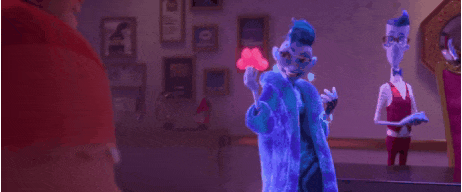
People mess this step up because they mess up Step 2. They forget that the storytellers are trying to tell them something—something specific, something with parameters—and they just start reading their own ideas and reasoning into the characters.
Prime example: people blaming Admiral Holdo for Poe’s actions in Star Wars: The Last Jedi. The whole movie, Poe is doing things that are understandable, but ultimately, foolish. His Character Actions are coming from his Character Motives—which are flawed. Poe believes he should always stand and fight and do what’s heroic. There’s a little pride that goes with that—that he has to be the one to make the stand, or at least to know that there is a heroic plan. But every time he takes these actions, something bad results from it.
Disobeys Leia and Bombs the Dreadnaught -> Every other Pilot dies, and the ship is being tracked anyway. Leia slaps him and tries to tell him to learn a different lesson. Sad or intense music plays. One of the other main characters is majorly negatively affected by the death of her sister in this bombing run.
Sends Finn & Rose on a Mission Without Trusting His Superiors With the Plan -> They Don’t Make It and Nearly Die. His Superiors Trust Him Less.
Staged a Mutiny Necause He Doesn’t Trust Any Plan That’s Not Heroic, Especially if They Didn’t Tell Him First -> The Real Plan is Almost Foiled, Leia Stuns Him.
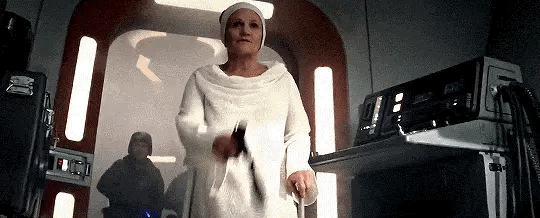
But some people see all that and they don’t willingly accept that the filmmakers are telling you Poe is in the wrong. They impose the fact that they like him, and they don’t like the purple-haired lady, over the narrative—against all reason, against all odds. They’ve stopped taking in the story, and they’re writing fanfiction before it’s even over. They believe Poe is in the right—if Admiral Holdo had just told him the plan, he would’ve gone alone with it! None of this had to happen!
Actually, the storytellers prove the opposite of that: that Poe would’ve been furious and put a stop to a life-saving plan, because he hates running away. But people are spinning out into “what SHOULD have happened,” or removing one tiny piece of the story and blowing it up and out of context, and judging the whole story on that.
If you’re not a big Star Wars fan, consider this: I’ve seen people argue that in Beauty & the Beast, the Enchantress is the real villain and the Beast and his castle are the victims. This is ridiculous. Clearly, the storytellers are telling you that the Beast was in the wrong and the Enchantress was in the right.
They’re telling you this because they design the Enchntress beautifully. They align her with virtues like “value love, be kind to others, be humble,” and they introduce the beast to you with “sneered, selfish, spoiled, unkind, no love in his heart.” They straight up tell you that in the narrator’s voice. You have to believe them, in good faith, if you want to understand what they’re saying.
What about when there’s no voiceover narrating what’s good and bad? No problem. Look at other things. Like I said, look at how Poe is made a fool of by a benevolent and beloved character (Leia) whenever he makes decisions that the storytellers want you to see as bad decisions. Look at the lighting, the location, the colors, and the music during scenes where consequences of a characters’ actions are coming.
That’s what you’re looking for. What does the movie say is good, and what does the movie say is bad? What does the movie say is true, and what does the movie say is a lie?
At the beginning of E.T., the main character is disliked by everybody, including his older brother, because he only thinks of himself and how he feels. By the end, when the kid has taken such careful care of E.T. and reveals it to his big brother, his big brother wants to help him. They’re all brought together. Because the main character stopped doing something that the storytellers disapprove of, which is “thinking only about how you feel,” and he started “thinking about how other people feel” for a change. In the beginning of the movie, he’s lonely, angry, standing in shots that are wide and empty. By the end, he’s flying, beautiful music is playing, and he’s happy. The storytellers reward what they’re trying to convince you is good and right.
Step 6: Are the Storytellers Right?
I always stress remembering this last part. It’s all well and good to lower your defenses and take in a story in good faith. You should not ask this question until you’re done listening, in most cases. Just like it’s well and good to listen to someone with a different perspective than you—you might be wrong, and a story’s main function, like I say on my profile’s pinned post, is to act as a Signpost that Directs You Back to Truth When You’ve Wandered.
But the problem is, fallible humans are telling the stories, and fallible humans are listening to the stories.
So you need to know what you believe, and after the storytellers tell you something, measure it against reality. When Greta Gerwig says, “You Can Be Whatever You Want to Be, Because You’re God,” and she says it with the Barbie movie, is she right? When Cinderella says, “Have Courage and Be Kind, and You’ll Have Hope in the Worst Circumstances,” is the movie right? What if you find yourself in the worst of circumstances one day—you better hope Cinderella didn’t feed you lies. What if there is a God, and it’s not you—you better hope Barbie didn’t feed you lies.
I really enjoyed going over this! I’m sorry it was so long. If there’s ever anything more or like, follow-up questions, go ahead and ask! I’ll try to make it briefer next time. Thanks again!
#storytelling#story#stories#movies#tips#into the spider verse#inside out#the lion king#Aladdin#Disney#character writing#character analysis#analysis#media analysis#film#Shawshank redemption#writing#writing advice#tricks#media criticism#critical thinking#Barbie#Barbie 2023#asked#answered#meta#community#abed nadir#Jeff winger
78 notes
·
View notes
Text
Everyone scandalized about Chilchuck being thirsted over, a character who is objectively 29, which is 40+ in human years, who has 3 grown daughters and a divorce, just because of how he's drawn, you have my biggest congratulations. I truly did not think the complex physiological system of a human body could be managed by a creature with not one singular brain cell. How you managed to stagger over to the computer and bash your skull against the keyboard with enough accuracy to post remains a further mystery. I am going to put you in a maze filled with buzzsaw goblins and will use the results to write a second PhD thesis.
#my stuff#ive only seen the tip of the iceberg from someone i'm following and oh my god is it taking all my power not to get involved#how are there wholeass adults who are this fucking stupid#brain revolving inside a peanut shell type intelligence. failed out of english class for incurable illiteracy disease.#symptomatic of terminal online-only fandom-is-real-life syndrome and i hope you LOG OFF FOREVER#notice that i am not tagging this. this is intentional. don't you fucking dare tag this with the show/manga.#i pre-emptively blocked like 6 people for having the most blank MRI ass takes. don't make that number go up.
142 notes
·
View notes
Note
Hhhello,,, can. Can I have a stimboard of Fear from inside out plz,,, thank u so much,,,,, i just think he is neat
here ya go!!









fear from inside out stimboard
🌂🍇🪻 | 🌂🍇🪻 | 🌂🍇🪻
🌂🍇🪻 | 🌂🍇🪻 | 🌂🍇🪻
🌂🍇🪻 | 🌂🍇🪻 | 🌂🍇🪻
☆ Requests: Open ☆

#age regression#pet regressor#petre blog#sfw agere#age regressor#pet regression#petre#animals#autistic stimming#stimboard#agere tips#fear inside out#fear stimboard#inside out fear
69 notes
·
View notes
Text

it's a crime that I can't bite my own thighs
#selfie#puppy girl#thighs#i feel my body tearing itself apart from the inside#this incurable yearning for something just on the tip of my understanding#unidentifiable need that boils my blood into a cold sweat#i think the only way to keep myself calm is to put your throat between my teeth
175 notes
·
View notes
Text
Unlocking memory mastery 🧠Cognitive hacks for long-term retention
Spaced repetition 🗓️
Instead of massed practice (cramming), spaced repetition involves reviewing material at increasing intervals. This technique has been proven to enhance long-term retention by leveraging the spacing effect, allowing you to remember information more effectively over time.
Memory palaces 🪑
Discover the ancient art of memory palaces, a method that involves associating information with specific locations in a familiar building or spatial environment. By mentally navigating through these spaces, you can easily recall the information linked to each location.
Mnemonics and acronyms 🔤
Transform complex information into memorable acronyms or mnemonic devices. These creative memory aids can help you encode and retrieve information more efficiently by linking it to familiar or vivid associations.
Visual imagery 👀
Embrace the power of visual imagery to enhance memory. Create mental images or mind maps that represent the information you're trying to remember. Visualizing concepts can make them more concrete and easier to recall.
Teach someone else 👩🏻🏫
The act of teaching someone else what you've learned can solidify your own understanding and retention of the material. Whether it's explaining concepts to a friend or writing a study guide for a classmate, teaching others reinforces your own knowledge.
Dual coding 🤹🏽♀️
Combine verbal and visual information to encode material more deeply. Pairing words with corresponding images or diagrams can create multiple pathways for memory retrieval, making the information stick in your mind.
Chunking 🧗🏽♀️
Break down large amounts of information into smaller, more manageable chunks. By organizing material into meaningful groups, you can improve your ability to remember and recall it.
By incorporating these cognitive hacks into your study routine, you can transform the way you learn and retain information. Say goodbye to short-term memory lapses and hello to long-term mastery of your academic material. Get ready to unleash your memory power and achieve academic success like never before!
#medicine inside#studyblr#study with me#study hard#study time#studying#study inspiration#studyinspo#study movitation#how to study#study tips#study hacks#study habits
62 notes
·
View notes
Text
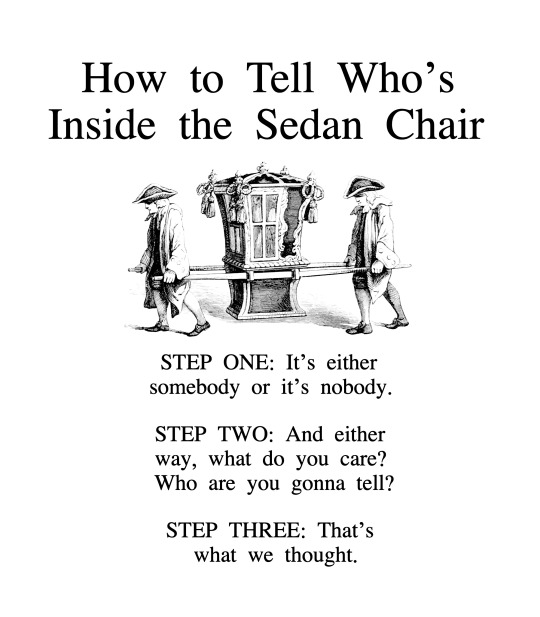
83 notes
·
View notes